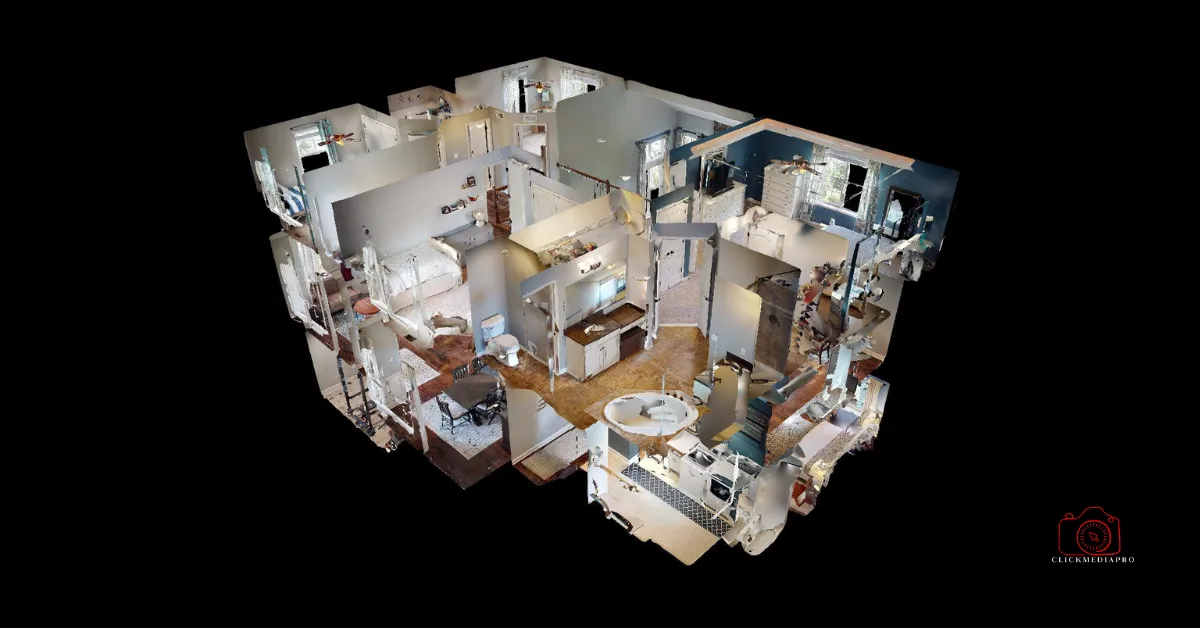3D Tours in Real Estate – In today’s digital age, homebuyers expect convenience, efficiency, and an immersive experience when searching for properties. The traditional process of attending multiple in-person showings is no longer the only option. Thanks to 3D virtual tours, buyers can now explore properties from anywhere, at any time, with just a few clicks.
Real estate professionals are rapidly embracing 3D tours as a powerful marketing tool, allowing them to showcase properties in a more engaging and interactive way. From improving buyer engagement to shortening the sales cycle, 3D technology is transforming real estate marketing.
In this blog, we will explore how 3D tours work, their benefits, and why they are essential for modern real estate listings.
Explore the latest pre-construction developments in Canada with detailed listings and insights.
What Are 3D Virtual Tours?
A 3D tour is a fully interactive digital representation of a property, created using high-resolution photography and 3D scanning technology. Unlike traditional static images or basic video walkthroughs, 3D tours allow buyers to navigate through a property as if they were physically present.
Stay updated on the pre-construction real estate market by reading expert blogs.
How Do 3D Virtual Tours Work?
The process of creating a 3D tour typically involves:
- Capturing the Space: Using specialized cameras like Matterport, 3D cameras, or LiDAR-equipped devices, real estate photographers scan the entire property, capturing detailed images from multiple angles.
- Processing the Data: The collected images and depth data are stitched together using 3D rendering software, creating an interactive model of the space.
- Interactive Navigation: Once the tour is ready, viewers can click, zoom, and move through rooms, experiencing the space from multiple perspectives.
- Virtual Staging and Enhancements: Some 3D tours also include virtual staging, allowing agents to furnish empty spaces digitally.
Find exceptional real estate opportunities in Canada, including homes and condos.
With the help of AI and cloud-based platforms, these virtual tours load quickly and can be accessed from any device, making them widely accessible for buyers.
Why Are 3D Tours Gaining Popularity in Real Estate?
1. Buyers Prefer Immersive Experiences
A 3D virtual tour provides a realistic and interactive experience that static images simply can’t match. Buyers can:
- Walk through the property at their own pace
- Explore rooms from different angles
- Zoom in on details like flooring, finishes, and layouts
This level of immersion helps buyers form a stronger emotional connection to the property.
Get the latest trends and updates on Toronto real estate by reading articles.
2. Attracts More Potential Buyers
Real estate listings with 3D virtual tours receive up to 40% more engagement than those without. Why? Because buyers spend more time exploring the listing, increasing the chances of a successful inquiry.
Discover investment potential in the 28 Bobmar Road Garden Suite, a promising project in Scarborough.
3. Saves Time for Both Buyers and Agents
Virtual tours reduce the need for unnecessary in-person visits. Buyers can explore multiple homes online before deciding which properties to visit physically. This saves time for:
- Buyers: They can narrow down their choices without scheduling multiple appointments.
- Agents: Less time spent on unqualified showings, allowing them to focus on serious buyers.
Learn more about the Bobmar Road real estate market, including upcoming developments.
4. Expands Market Reach
A 3D tour makes a property accessible to out-of-town and international buyers, removing geographical barriers. Whether a buyer is relocating from another city or country, they can view and experience the home without traveling.
5. Enhances Marketing and Online Presence
Properties with 3D tours rank higher on real estate platforms because they:
- Increase listing engagement
- Keep users on the page longer
- Improve SEO for real estate websites
Social media and email marketing campaigns also perform better when they include interactive 3D content.
Find out how custom garden suites in Toronto can add value to your property.
6. Builds Buyer Confidence
One of the biggest challenges in real estate is helping buyers visualize a home before visiting. 3D tours provide complete transparency, reducing the chances of disappointment and leading to more confident, serious buyers.
7. Works for All Types of Properties
3D technology isn’t just for luxury real estate. It’s now being used for:
- Single-family homes
- Condos and apartments
- Commercial real estate (office spaces, retail stores)
- Vacation rentals and Airbnb listings
This versatility makes 3D tours a must-have tool across the real estate industry.
How 3D Virtual Tours Compare to Other Listing Methods
| Feature | 3D Virtual Tours | Photos | Video Walkthroughs |
|---|---|---|---|
| Interactivity | ✔ Fully interactive | ✖ Static | ✖ Limited |
| Immersive Experience | ✔ Feels like being inside the property | ✖ Only provides images | ✔ Better, but still limited |
| Time Efficiency | ✔ Buyers can explore anytime | ✔ Quick to view, but lacks detail | ✖ Requires watching the entire video |
| Property Detail Level | ✔ High (explore every corner) | ✖ Limited to captured angles | ✔ Good, but lacks control |
| Marketing Value | ✔ High engagement, boosts SEO | ✔ Standard | ✔ Moderate engagement |
While professional photography and videos still play a vital role in real estate marketing, 3D tours provide an unparalleled level of interaction and engagement.
Best Practices for Creating High-Quality 3D Tours
1. Use Professional 3D Cameras
For the best results, use high-quality 3D cameras such as:
- Matterport Pro Series
- Ricoh Theta Z1
- Insta360 ONE X2
These cameras capture high-resolution images with depth and accuracy, creating seamless virtual experiences.
Browse a wide selection of Toronto homes for sale, including condos and townhouses.
2. Ensure Proper Lighting
Natural lighting works best, but if needed, use soft interior lighting to eliminate dark spots.
3. Keep the Property Clean and Staged
A clutter-free and well-staged home ensures that buyers see the property in its best possible condition.
Invest in pre-construction properties in Toronto, a thriving real estate market.
4. Include Floor Plans for Better Navigation
Adding a 2D or 3D floor plan to the virtual tour enhances the buyer’s understanding of the property layout.
5. Optimize for Mobile and VR
Ensure that your 3D tours are mobile-friendly and VR-compatible for the best user experience.
Future of 3D Tours in Real Estate
With advancements in AI, augmented reality (AR), and virtual reality (VR), the future of 3D tours will include:
- Fully interactive virtual staging (buyers can customize furniture styles in real-time)
- AI-powered property recommendations based on buyer preferences
- Live guided virtual showings where agents can walk buyers through a 3D tour remotely
As technology evolves, 3D tours will continue to reshape the way real estate is marketed and sold.
Boost your brand visibility with professional Toronto Real Estate Photography.
Conclusion
3D virtual tours have revolutionized property showcases, making home buying more convenient, immersive, and accessible. They attract more buyers, increase listing engagement, and provide a transparent way to explore properties online.
For real estate agents and sellers, investing in 3D tour technology is no longer just an option—it’s a must-have marketing strategy in today’s digital-driven market.
Improve your website rankings with expert SEO and digital marketing solutions.
Ready to elevate your property listings?
At Click Media Pro, we specialize in professional 3D real estate tours that captivate buyers and drive faster sales. Contact us today to showcase your properties with cutting-edge 3D technology!
Check out this stunning Toronto condo listing at 401-1 195 McCaul St, featuring modern amenities and prime location.

